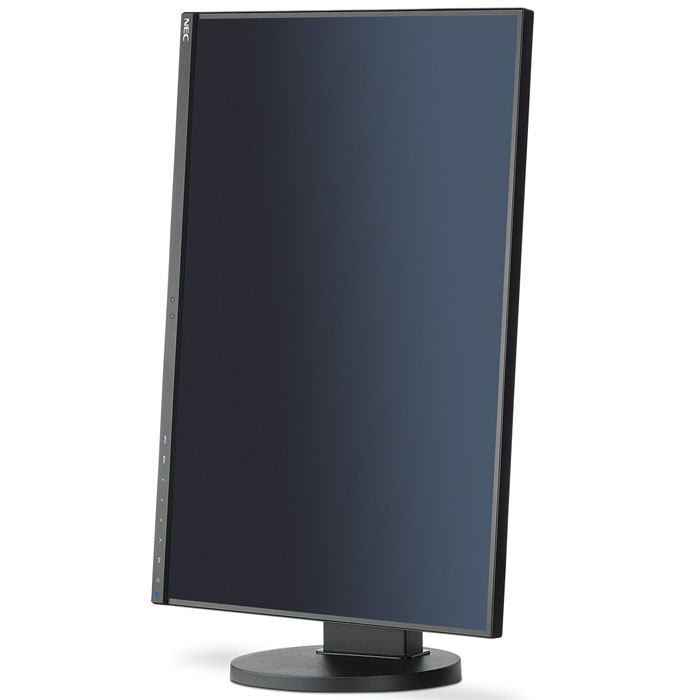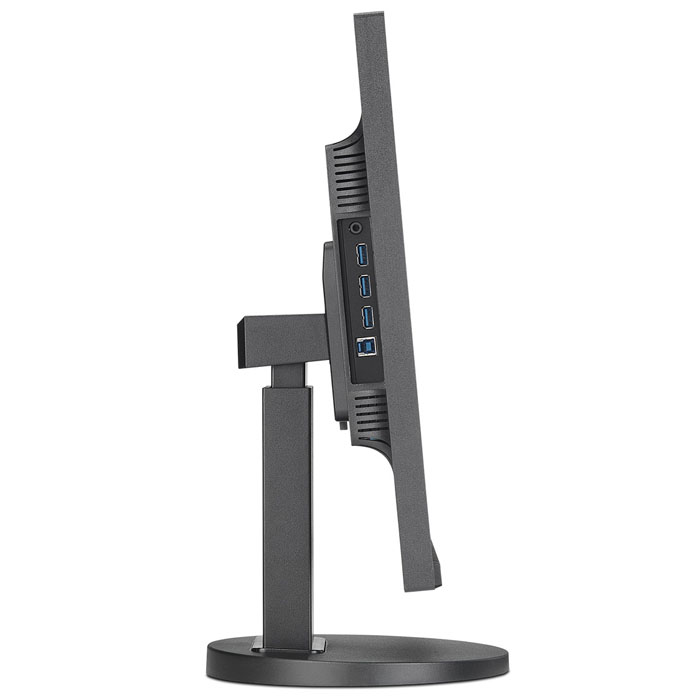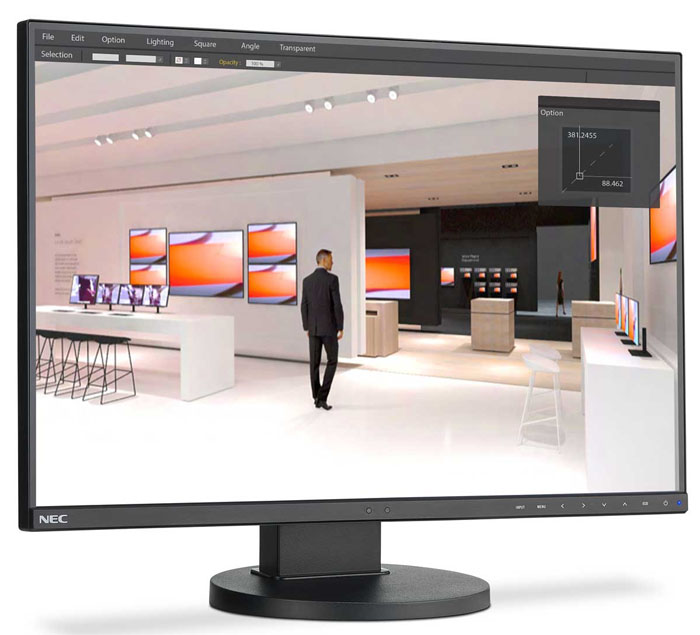Early Verdict
The 16:10 category is a shadow of its former self, but a few manufacturers have kept the format alive. The EA245WMi is a great way to utilize those extra pixels without devoting a lot of desk space to a large 30-inch panel. Coupled with ControlSync, SpectraView II and a full set of enterprise-friendly features, there is little this rugged display can’t accomplish. It won’t be on any gamers’ short lists, but for those who need to plow through workaday tasks, there are few better displays out there.
Pros
- +
16:10 aspect ratio
- +
Build quality
- +
Off-axis performance
- +
Out-of-box accuracy
- +
Bright picture
- +
ControlSync
- +
Large enterprise feature-set
Cons
- -
Contrast
- -
Needs software calibration to reach full potential
- -
Native gamma tracking
Why you can trust Tom's Hardware
Introduction
In the land of cubicles, 24" monitors are probably among the most common panels gracing the average desktop. They have enough pixel density, even at FHD resolution, to provide a sharp image capable of resolving fine detail and small fonts. And IPS panels in this form factor don’t cost an arm and a leg. At the premium level, we have screens like today’s review subject, the NEC EA245WMi. In addition to unmatched build quality and precise engineering, you get a comprehensive set of enterprise features like ControlSync, SpectraView II calibration software, and solid, reliable video performance.
Specifications
To gamers and enthusiasts, NEC monitors may not inspire excitement, but to IT managers responsible for supporting thousands of workstations, there are few better displays. EA-series screens combine rugged build quality with features that make them super easy to install, configure, and manage.
In our recent review of the EA275WMi, we took an in-depth look at ControlSync and SpectraView II. The former is a simple cable that connects up to five NEC displays and allows them to share menu settings in real time. You can literally adjust brightness on the primary panel and watch the changes happen on the subordinate monitors.
SpectraView II is NEC’s proprietary calibration software that ships with either a Spyder or X-rite-sourced color meter. It’s an extra-cost option but we still like it better than any other manufacturer’s solution. Outside a universal package like CalMAN, SpectraView is easily the best way to ensure color accuracy for most models in NEC’s line.
The EA245WMi also has something few other displays can boast – a 16:10 aspect ratio. That extra height makes this 24" monitor a lot more useful, especially in the portrait mode. 1200 pixels is a little greater than the sizing of typical websites. And document editing is a task this format was born for. These days, it’s harder to find this ratio in rank-and-file products, but NEC has kept the flame burning with this and the jumbo EA305WMi and PA302W monitors. Is the EA245WMi a worthy stablemate to these two titans? Let’s take a look.
Packaging, Physical Layout & Accessories
The carton is as solid and secure as its contents. Thick double-corrugate cardboard protects a panel that already has the upright installed. All you need to do is attach the base with a captive bolt. The cable bundle includes DisplayPort, USB 3.0, and ControlSync. An IEC cord supplies current to the internal power supply. If you purchase the SV version of the monitor, you get a copy of SpectraView II on a neat USB drive shaped like a credit card with the license number printed on it. The software is available with either an i1 Display Pro or a Spyder5 colorimeter. Our review package included two monitors along with the i1/SpectraView II bundle.
Product 360




NEC is known for its chunky, industrial styling, but the EA245WMi is a departure from that. The chassis is sleek and thin with a miniscule 6mm flush-mounted bezel. The frame disappears when the power’s off but it’s visible during use. Across the bottom, the trim is wider at 16mm and on the right are the expected touch-sensitive controls. We prefer the joystick method of OSD navigation, but NEC has the best touch keys in the business. They respond to moderate pressure and never miss or repeat commands unintentionally. Small icons appear on the screen to let you know their functions. Also on the bottom trim strip are room-light and user-presence sensors. They work with auto-brightness and auto-off features. The anti-glare layer is aggressive in use but it doesn’t compromise image clarity.
Get Tom's Hardware's best news and in-depth reviews, straight to your inbox.
The stand is a heavily-built upright with a round base. Its movements are firm and completely free of play. You won’t find a mount like this on most other 24" screens. It feels as though it could support a much larger panel. The height adjustment is 100mm or just under 4”. Swivel is 45° in either direction and you get 30° backward and 5° forward tilt. Topping it off is a portrait mode which we suspect many users will take advantage of.
The side profile could be called NEC-light. The shape is unmistakable, but instead of the usual heavy and thick panel, everything is scaled down to a trim 48mm (less than 2”). On the left side is a USB 3.0 hub with one upstream port and three downstream ones. We’d prefer to see the upstream port on the bottom since you need it to run SpectraView II. Having a cable run out the side and under your desk is a bit awkward. Also, there's a headphone jack, which we appreciate.
Around back is a 100mm VESA mount and generous ventilation for the internal components. Everything is heavily shielded so there should be no EM interference with any nearby electronics. Speakers are small and relatively weak, but they are adequate for business use.
The input panel includes DisplayPort in and out connectors plus HDMI 2.0, DVI, and VGA. Analog audio is supported with a single 3.5mm jack. The small black and white plugs are for ControlSync. One monitor is designated as the primary. The cable runs from its output to the next panel’s input, and so on, up to five screens total.
MORE: Best Computer Monitors
MORE: How To Choose A Monitor
MORE: Display Calibration 101
MORE: The Science Behind Tuning Your Monitor
MORE: All Monitor Content

Christian Eberle is a Contributing Editor for Tom's Hardware US. He's a veteran reviewer of A/V equipment, specializing in monitors. Christian began his obsession with tech when he built his first PC in 1991, a 286 running DOS 3.0 at a blazing 12MHz. In 2006, he undertook training from the Imaging Science Foundation in video calibration and testing and thus started a passion for precise imaging that persists to this day. He is also a professional musician with a degree from the New England Conservatory as a classical bassoonist which he used to good effect as a performer with the West Point Army Band from 1987 to 2013. He enjoys watching movies and listening to high-end audio in his custom-built home theater and can be seen riding trails near his home on a race-ready ICE VTX recumbent trike. Christian enjoys the endless summer in Florida where he lives with his wife and Chihuahua and plays with orchestras around the state.
-
80-watt Hamster Thanks for focusing the spotlight on a 16:10 monitor. It's great to see someone other than Dell offer one in this price segment.Reply -
adrianlegg You could/should compare it to it's direct competitor - Eizo EV2455.Reply
Same segment, price, thin borders for multimonitor setup etc. -
spoidz Is the price of the calibration set the same when stand alone? I can always use another nice monitor for working on other PC's. Would this be a cheap way to get the calibration set?Reply
Or does it only work directly on NEC monitors? -
lorfa Looks like the pixel response/input lag graphs didn't make it in, showing up identical to the screen uniformity graphs.Reply -
ceberle Update on ControlSync: I've been informed by NEC that ControlSync now supports the daisy-chaining of up to 25 monitors. Pretty impressive! And a great help to IT managers everywhere.Reply
-Christian-
